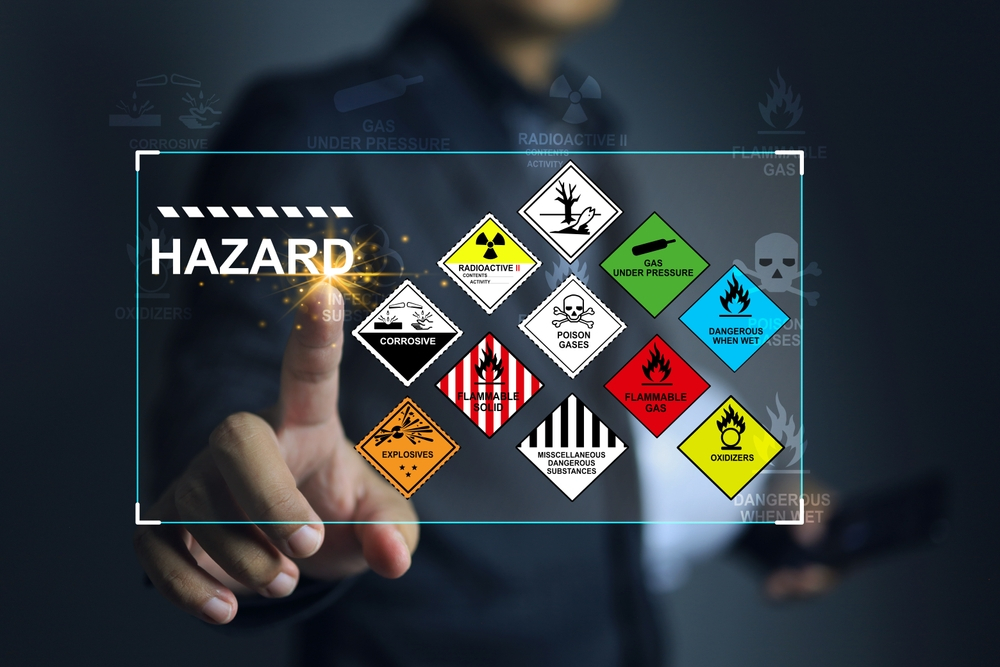7 Simple Techniques For Roar Solutions
7 Simple Techniques For Roar Solutions
Blog Article
The Only Guide to Roar Solutions
Table of ContentsRoar Solutions Fundamentals ExplainedThe 10-Minute Rule for Roar SolutionsNot known Details About Roar Solutions
In order to protect installments from a prospective surge a method of evaluating and categorizing a potentially hazardous location is required. The purpose of this is to make certain the appropriate option and installation of devices to ultimately protect against a surge and to make certain security of life.
(https://www.quora.com/profile/Roarsolutions)
No equipment needs to be set up where the surface area temperature level of the tools is more than the ignition temperature of the offered threat. Below are some typical dust hazardous and their minimum ignition temperature level. Coal Dust 380C 225C Polythene 420C (thaws) Methyl Cellulose 420C 320C Starch 460C 435C Flour 490C 340C Sugar 490C 460C Grain Dirt 510C 300C Phenolic Material 530C > 450C Aluminium 590C > 450C PVC 700C > 450C Soot 810C 570C The probability of the threat existing in a focus high enough to cause an ignition will vary from area to place.
In order to classify this risk a setup is split into locations of threat depending upon the quantity of time the unsafe exists. These areas are described as Areas. For gases and vapours and dirts and fibres there are 3 areas. Zone 0 Zone 20 A dangerous ambience is extremely likely to be present and might exist for extended periods of time (> 1000 hours annually) or even constantly Zone 1 Area 21 A harmful environment is possible but not likely to be existing for extended periods of time (> 10 450 C [842 F] A classification of T6 suggests the minimal ignition temperature level is > 85 C [185 F] Dangerous location electrical equipment possibly developed for use in greater ambient temperature levels. This would indicated on the ranking plate e.g. EExe II C T3 Ta + 60C( This implies at 60C ambient T3 will certainly not be surpassed) T1 T1, T2, T3, T4, T5, T6 T2 T2, T3, T4, T5, T6 T3 T3, T4, T5, T6 T4 T4, T5, T6 T5 T5, T6 T6 T6 A T Course rating of T1 indicates the maximum surface area temperature created by the instrument at 40 C is 450 C. Thinking the associated T Course and Temperature ranking for the equipment are ideal for the area, you can constantly utilize an instrument with a much more stringent Department rating than required for the location. There isn't a clear answer to this inquiry regrettably. It really does depend on the kind of devices and what repair work need to be performed. Tools with certain test treatments that can not be executed in the field in order to achieve/maintain 3rd party rating. Should return to the factory if it is prior to the devices's solution. Area Repair Work By Authorised Worker: Complicated testing might not be required nevertheless specific procedures may require to be followed in order for the devices to keep its 3rd party ranking. Authorized workers have to be used to do the work properly Repair work must be a like for like replacement. New element need to be considered as a direct replacement calling for no unique screening of the tools after the repair is total. Each piece of equipment with an unsafe score ought to be reviewed individually. These are described at a high level below, however for more comprehensive details, please refer straight to the guidelines.
Get This Report about Roar Solutions
The tools register is a comprehensive database of equipment records that includes a minimum set of areas to identify each product's area, technological parameters, Ex category, age, and environmental information. The ratio of In-depth to Close examinations will be figured out by the Equipment Danger, which is evaluated based on ignition danger (the possibility of a resource of ignition versus the probability of a flammable environment )and the harmful location classification
( Zone 0Area 1, or 2). Implementing a durable Risk-Based Assessment( RBI )method is important for ensuring compliance and safety in taking care of Electric Devices in Hazardous Locations( EEHA).
9 Simple Techniques For Roar Solutions

In terms of eruptive danger, a harmful location is an atmosphere in which an eruptive environment exists (or might be expected to be existing) in quantities that call for special safety measures for the building and construction, installment and use of tools. hazardous area electrical course. In this write-up we explore the difficulties dealt with in the work environment, the threat control steps, and the needed competencies to work securely
These compounds can, in particular problems, create explosive environments and these can have major and terrible repercussions. Most of us are acquainted with the fire triangular remove any one of the three elements and the fire can not happen, however what does this mean in the context of harmful locations?
In many circumstances, we can do little about the levels of oxygen in the air, but we can have significant influence on sources of ignition, as an example electrical tools. Hazardous areas are recorded on the harmful area classification illustration and are identified on-site by the triangular "EX" sign. Below, amongst various other vital info, areas are divided into three kinds depending on the threat, the possibility and duration that an explosive atmosphere will certainly exist; Area 0 or 20 is regarded the most hazardous and Zone 2 or 22 is deemed the least.
Report this page